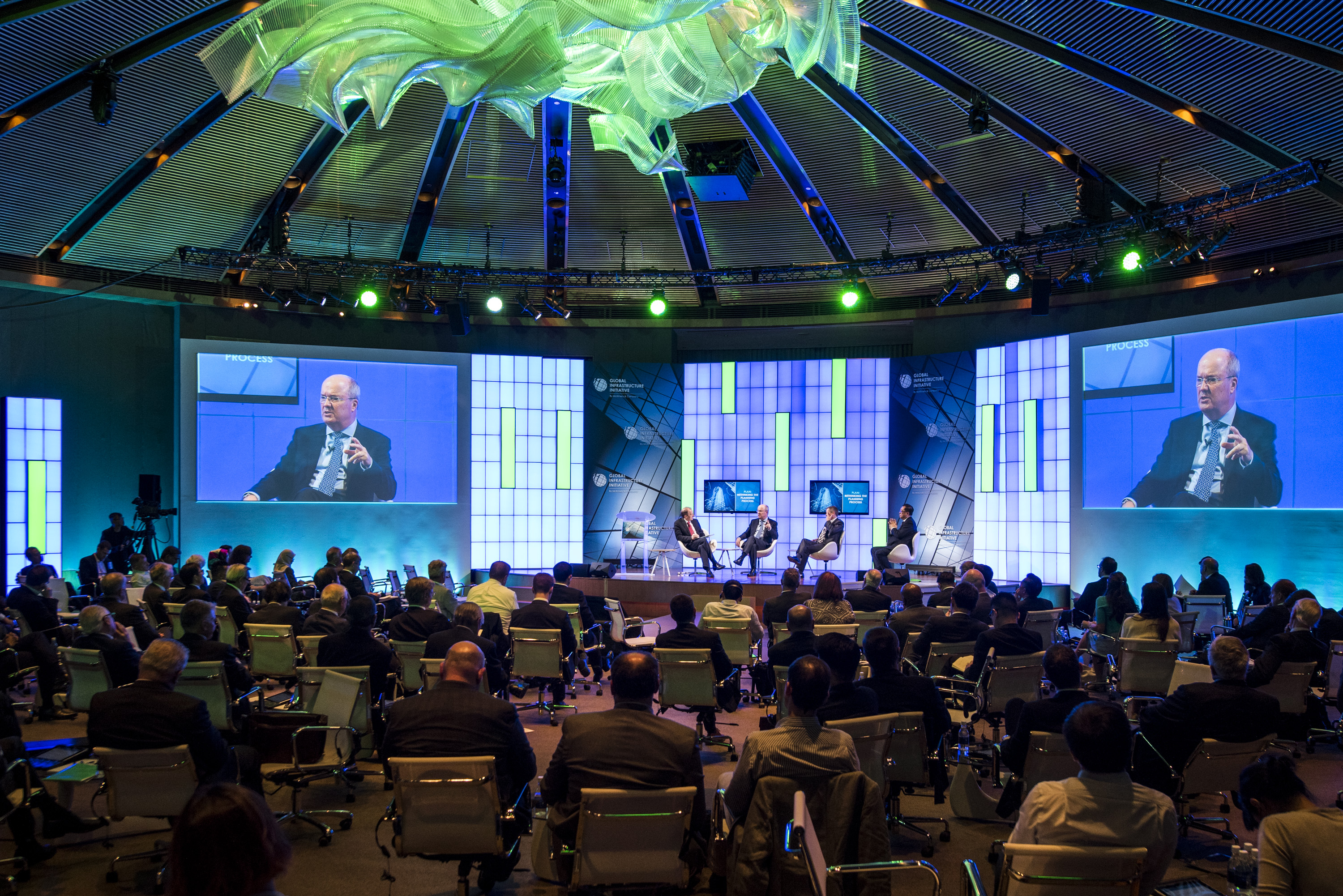June 15, 2017
The Three Important Infrastructure Investments You Might Not Be Making
According to the McKinsey Global Institute, the world will need to invest more than $3 trillion per year in infrastructure over the next 20 years just to keep pace with projected population growth. At the same time, construction productivity lags behind total global economic productivity, resulting in foregone value of $1.6 trillion per year. The size of the opportunity is significant and the cost of inaction is immense.
Against this backdrop, we joined more than 200 leaders in infrastructure and capital projects from around the world for the recent Global Infrastructure Initiative (GII) Summit in Singapore. It became abundantly clear from our discussions that in order to seize the infrastructure opportunity, investments need to go beyond developing assets. Organizations must also invest in three key areas if they are to succeed: leadership, organizational culture and diversity. So what can infrastructure leaders do? Here are some themes that emerged from the conversations at GII around these core issues:
1. Develop new capabilities.
Organizations will need to rethink their approach to talent development, emphasizing soft skills and general leadership capabilities rather than just technical abilities. Instead of moving individuals to projects of increasing scale, companies should think about rotational assignments or secondments to clients in order to give them a broader view of the business and help them become more well-rounded leaders. For example, consider whether it’s possible to give engineers an experiential view of the scope and complexity of how to deliver large-scale projects successfully. Infrastructure should also take advantage of its breadth: One leader remarked that multilateral development banks can help the industry develop more capabilities in areas such as financial and regulatory compliance.
With the development of public-private partnerships and more complicated ecosystems, strategic stakeholder management is increasingly key. Owners need to have a value-creation mindset, understand and manage complexity, and be willing to echo the voices of the operator and the customers. And that customer voice is changing. For instance, consumers now see mobility as a service, changing expectations for what infrastructure should deliver. Infrastructure organizations need leaders who can leverage technology to engage with their stakeholders in more meaningful, personalized ways, e.g., demonstrating the benefits of a new utility using virtual reality.

Discussing the future of infrastructure at GII 2017 in Singapore. Photo: McKinsey & Company
Technology is not only redefining how we communicate, but how the work itself gets done. Manufacturing has quickly gone from lean to outsourcing/offshoring models to automation. The latest iteration — Industry 4.0 — requires a range of skills, including leading transformation and integrating systems. To address these shifting demands and take advantage of these emerging possibilities, innovation must take place across three areas: technical, people and commercial. The challenge is that there is no burning platform, so organizations must find compelling ways to articulate the need to drive innovation, as well as leaders who can think strategically and conceptually about the future of infrastructure.
Leaders must also be mindful of the unfortunate flip side of technological evolution, including the growing threat of cyberattacks. The interconnectivity of Industry 4.0 creates new vulnerabilities and recent ransomware attacks have demonstrated that cybersecurity can be a life or death issue. Thus, there will continue to be significant demand for highly sought-after experts to help infrastructure organizations defend themselves.
Talent is scarce and, in areas such as technology and cybersecurity, infrastructure organizations are often competing with other industries for qualified candidates. Attracting and retaining talent is made considerably more complicated by the feast-or-famine cyclicality demanded by projects and the brief timeframe between projects when executives are open to approaches. The industry in general needs to find ways to inspire young talent with a purpose and vision while managing its workforce through the up-and-down cycles.
2. Build more collaborative cultures.
Projects have increasingly complex structures with multiple players — engineers, builders and financiers — and a growing emphasis on collective outcomes. Gone are the days of completing an infrastructure project and stepping aside; for example, builders are now staying on as equity owners for the life of the asset. The procedure-focused and, at times, adversarial culture of the industry will need to change to achieve shared, long-term objectives. Rather than following a chain of command, leaders from across functions will be required to work more closely together than ever before. Those who can build consensus, take into account political nuances and create a sense of engagement will be integral to establishing more collaborative cultures.
In addition, as digital transformation reshapes the landscape, organizations will also need cultures that foster learning, agility and innovation. To help make these shifts, organizations will need leaders who are comfortable with ambiguity and encourage creativity. One leader suggested that organizations have twice as many meetings about opportunity than about risk, which could help shift the culture to one that emphasizes greater flexibility and experimentation over safety and order.
3. Leverage diversity.
One of the most pronounced issues facing the infrastructure industry is a lack of diversity. Spencer Stuart recently analyzed the career path of 150 CEOs from some of the largest infrastructure companies around the world. Fewer than one-third of these executives had ever lived outside of their country of origin. The issue is particularly stark when it comes to gender: Only 11 of the CEOs (7 percent) in our study were female. (You can read more about our study here).
Our colleague, Alice Au, spoke on a panel on the next big skills disruption and how the industry can tap into one of the largest, but underused, sources of potential: women. She said, “Quotas don’t work. If you try to legislate diversity, it will not work.” As we’ve seen in our work, commitment to diversity must start at the top and be supported by the organization’s culture. For one panelist, the solution was to remove the responsibility for diversity from the HR function to give it greater prominence. Recruitment of women must be ramped up at every level in order to build a sustainable pipeline.

Alice Au (far right) serving on a panel on the next big skills disruption at GII. Photo: McKinsey & Company
This is not simply an argument for fairness, but a commercial imperative. Diversity is necessary to close the widening skill gap in the sector. In addition, more and more clients are prioritizing diversity and are looking for contractors who share this commitment. Many infrastructure organizations will need to rethink their approaches to talent. It’s no longer enough to bring on engineers and financiers who only excel within the narrow scope of their disciplines; demonstrated experience collaborating beyond their functions will be vital. Additionally, leaders from industries such as telecommunications, natural resources and banking can also bring valuable insights to infrastructure initiatives. Leaders should think of diversity across all of its dimensions as a way to bring the diversity of thought needed to compete in an evolving infrastructure landscape.
Hugh Thorneycroft manages Spencer Stuart’s UK business, leads the firm’s Industrial Practice in London and is a member of the Infrastructure Practice. He conducts search assignments for general management and senior-level functional leadership roles for companies in the oil and gas, utilities, renewable energy and infrastructure sectors. Reach him via email and follow him on LinkedIn.
Greg Stanmore leads Spencer Stuart’s Infrastructure, Real Estate and Private Equity practices. He has worked in consulting and senior executive roles in Australia, New Zealand, Europe, Asia, the United States and South America. Reach him via email and follow him on LinkedIn.
1. Have broader conversations.
While there is ample capital available for infrastructure projects, there is a shortage of attractive or “bankable” projects with well-structured plans. The sheer number of players — investors, the public, governments, construction companies and infrastructure organizations — with potentially competing objectives can make planning difficult. The procedure-focused and, at times, adversarial culture of the industry will need to change in order to create outcomes that will benefit everyone.
Asset owners and contractors need to come to the table early on in a project, with open minds and open books, and focus on win-win solutions to the issues at hand — instead of fighting over claims ex post. Some leaders called for more global information exchange standards at the industry level, with the key challenge being how organizations will balance the desire for efficiency and open communication with protecting their intellectual property.
Transparent conversations that create a shared foundation of facts, take into account political nuances and foster a sense of engagement will be increasingly critical. Leaders who are able to build consensus and use technology to enable these conversations will be in demand. One executive suggested that organizations have twice as many meetings about opportunity than about risk, which will require leaders and organizational cultures that encourage innovation and creativity.
1. Have broader conversations.
While there is ample capital available for infrastructure projects, there is a shortage of attractive or “bankable” projects with well-structured plans. The sheer number of players — investors, the public, governments, construction companies and infrastructure organizations — with potentially competing objectives can make planning difficult. The procedure-focused and, at times, adversarial culture of the industry will need to change in order to create outcomes that will benefit everyone.
Asset owners and contractors need to come to the table early on in a project, with open minds and open books, and focus on win-win solutions to the issues at hand — instead of fighting over claims ex post. Some leaders called for more global information exchange standards at the industry level, with the key challenge being how organizations will balance the desire for efficiency and open communication with protecting their intellectual property.
Transparent conversations that create a shared foundation of facts, take into account political nuances and foster a sense of engagement will be increasingly critical. Leaders who are able to build consensus and use technology to enable these conversations will be in demand. One executive suggested that organizations have twice as many meetings about opportunity than about risk, which will require leaders and organizational cultures that encourage innovation and creativity.
1. Have broader conversations.
While there is ample capital available for infrastructure projects, there is a shortage of attractive or “bankable” projects with well-structured plans. The sheer number of players — investors, the public, governments, construction companies and infrastructure organizations — with potentially competing objectives can make planning difficult. The procedure-focused and, at times, adversarial culture of the industry will need to change in order to create outcomes that will benefit everyone.
Asset owners and contractors need to come to the table early on in a project, with open minds and open books, and focus on win-win solutions to the issues at hand — instead of fighting over claims ex post. Some leaders called for more global information exchange standards at the industry level, with the key challenge being how organizations will balance the desire for efficiency and open communication with protecting their intellectual property.
Transparent conversations that create a shared foundation of facts, take into account political nuances and foster a sense of engagement will be increasingly critical. Leaders who are able to build consensus and use technology to enable these conversations will be in demand. One executive suggested that organizations have twice as many meetings about opportunity than about risk, which will require leaders and organizational cultures that encourage innovation and creativity.